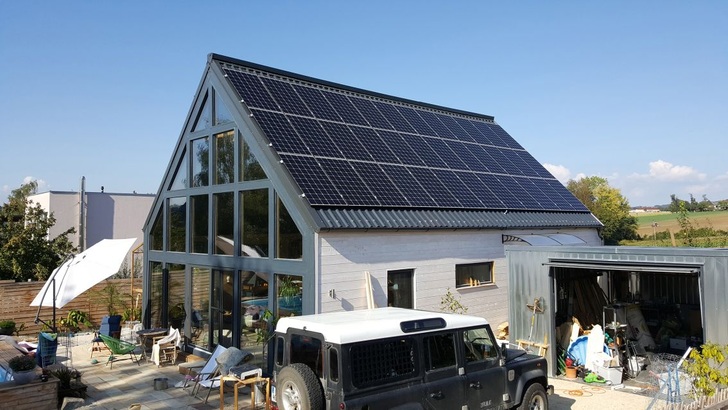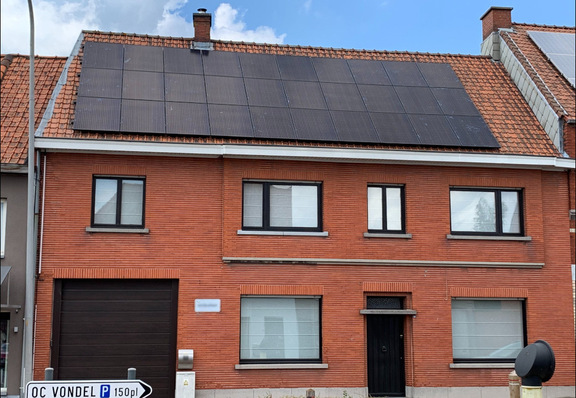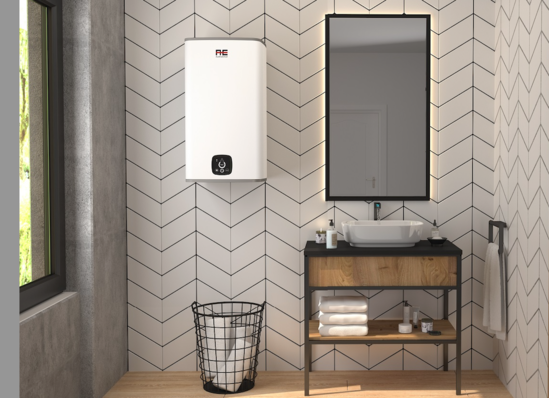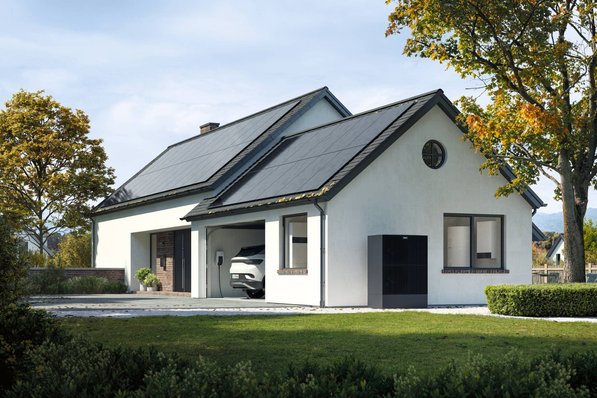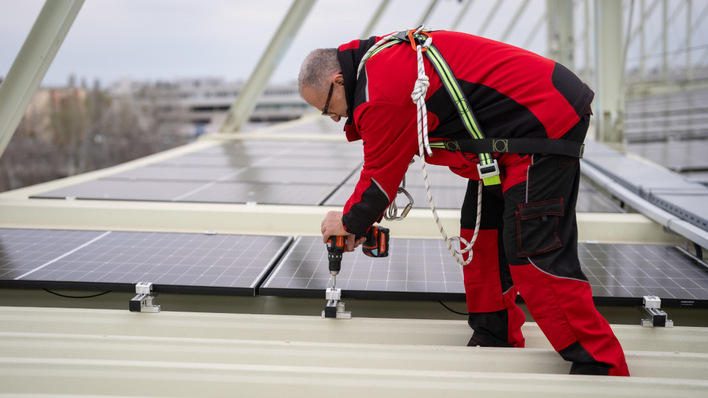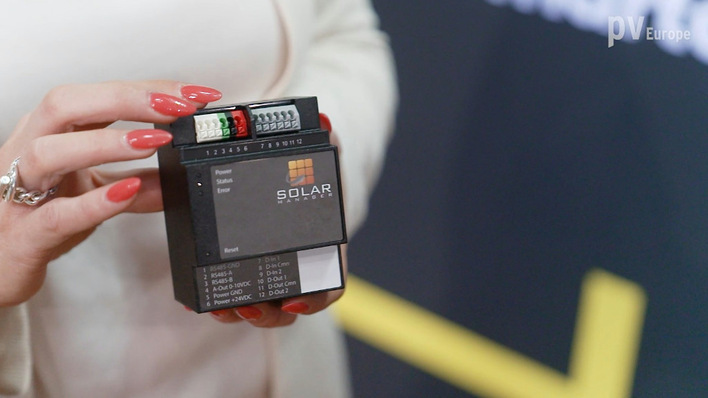Let us be clear: The innovative decentralised hot water storage units have nothing in common with the night storage heaters from the 80s. While those operated on cheap but dirty power from large power plants run on fossil fuels, the modern power-to-heat technologies are based on sustainable decentralised photovoltaics electricity.
Power grid under pressure
And this not only generates clean heat energy, but also helps to mitigate one of the major problems of decentralised electricity generation: The public power grid is under increasing pressure to regulate all of the small energy generators and keep the voltage within the lines. Reducing the PV surpluses per household takes the strain off the grids and allows making efficient use of the generated power locally.
In fact, the potential of this technology is reckoned to be high enough to say that power-to-heat will be the future of the heating market and that without it, the energy transition might founder.
The current state of the art
A central heat source, often supplemented by PV, supplies decentralised home stations throughout the year and 24 hours per day (for reasons of comfort and hygiene). These are tasked both with heating the rooms during the heating period and with bringing the hot water up to temperature.
The latter is often done without buffering right at the moment when it is needed, using a powerful heat exchanger. In order to make hot water available to the consumers around the clock, it is essential for such a two-pipe system to be operating as a circulation loop and constantly be circulating hot water. The energy losses that occur in this way can be considerable and may often be equal to the actual energy demand for the hot water itself. In existing buildings with four pipe systems, these losses can be significantly higher still.
Dynamic simulation over the course of a year
To illustrate the potential energy savings and efficiency gains from using power-to-heat systems, the energy flow is compared using a hypothetical example for both systems:
The model is based on a residential building in Austria with eight flats. The heating period is defined from September to April, the hot water consumption per flat is 80 litres per day (equivalent to an average of 1.5 persons per flat) at 50 degrees Celsius.
The pipes for heat distribution have a total length of 140 metres. The simulation was carried out without taking other electrical consumers into account. In both cases, a 30 kilowatts air heat pump supplies the heat to the rooms at low temperature.
Hot water and heating from one source
In the first case, the hot water is also heated by an air heat pump. For this purpose, the operating temperature is raised three times a day for the intermittent filling of the decentralised boilers.
This assumption is therefore already based on an energetically more favourable case, since the temperature for hot water production does not have to be constantly available. Nevertheless, the result shows a high loss of 9,000 kilowatt hours, which corresponds to 82 percent of the energy required to heat domestic hot water.
Separate systems
In the second case, the hot water preparation is kept separate from the heating of the building. This allows heat pumps in particular to operate more efficiently. The domestic hot water is heated de-centrally by photovoltaic heat generators. The energy source is a solar system (12 kilowatts, equivalent to 1.5 kilowatts per apartment). The solar electricity is fed directly into the hot water storage tanks and converted into heat. Any surplus beyond this is fed into the power grid.
Since in the second case charging does not take place intermittently but continuously, slightly higher losses occur at the hot water storage tanks. However, the comparison shows a 20 percent reduction in the overall demand for energy from the electricity grid (10,300 instead of 12,600 kilowatt hours) compared to the first variant.
Subtracting the surplus solar energy fed into the grid from this, the overall energy balance shows a reduction in electrical energy input into the building of over 50 percent. Under these conditions, the solar coverage rate for water heating is 64 percent. The self-consumption of solar energy reaches 68 percent. It would even be possible to increase this, for example by supplying shared consumers within the building.
Advantages of decentralised hot water generation
Decentralised solutions can help prevent thermal distribution losses in the riser, distribution and connecting pipes. In addition, prices for photovoltaic panels have been falling steadily for years, while the efficiency achieved keeps rising. This means that the point at which this technology is still too expensive to generate heat is now behind us.
By using photovoltaics with decentralised electrical heat generators, the high energy losses from pipes in residential construction can be completely avoided. Solar energy is converted into heat exactly where it is needed – and that with virtually no losses.
First advantage: combine with heat pumps
In addition to the strict separation of heating and hot water, combined solutions are also possible. In winter, for example, it makes sense to preheat domestic hot water with the aid of a heat pump, followed by electrical secondary heating. If photovoltaic heat generators are used for this purpose, the temperatures of the house mains can be permanently kept at the lower level of the building heating system. At the same time, the low outside temperatures also improve the efficiency of the photovoltaic system.
In summer it is advisable to use the technology as the sole source of heat. The regular heating system or the link to the district heating system will be completely shut off. Inefficiently operating the system on the few days with not enough solar irradiation is no longer necessary. Especially in the case of district heating networks, the losses from summer operation usually exceed the actual energy demand of the consumers. In most cases, the associated costs are covered by the utility companies.
Second advantage: less loss than solar-thermic systems
Austria is still regarded as the heartland of conventional solar-thermal energy. However, public authorities and housing developers are well aware that it is only possible to centrally integrate the solar energy from thermal systems into the building services. This energy is often harvested in a complex and cost-intensive way and is lost again due to the high distribution losses on the way to the consumers.
There are examples of residential buildings in which the distribution losses exceed the annual solar yields. In addition, photovoltaics has already dropped below the price level of solar thermal energy due to drastic cost reductions.
The author is Reinhard Hofstätter, head of international sales at myPV.
Discover my-PV's products also by video
Keep up with innovation in PV! Watch our PV Guided Tours about myPV at The Smarter E Europe in Munich:
https://www.pveurope.eu/Videos/pv-Guided-Tours-videos-2018#title-1
Stay informed, get our newsletter twice a week.
Register here
Read more about solar modules.
Read more about solar mounting systems.
Read more about solar energy storage.


